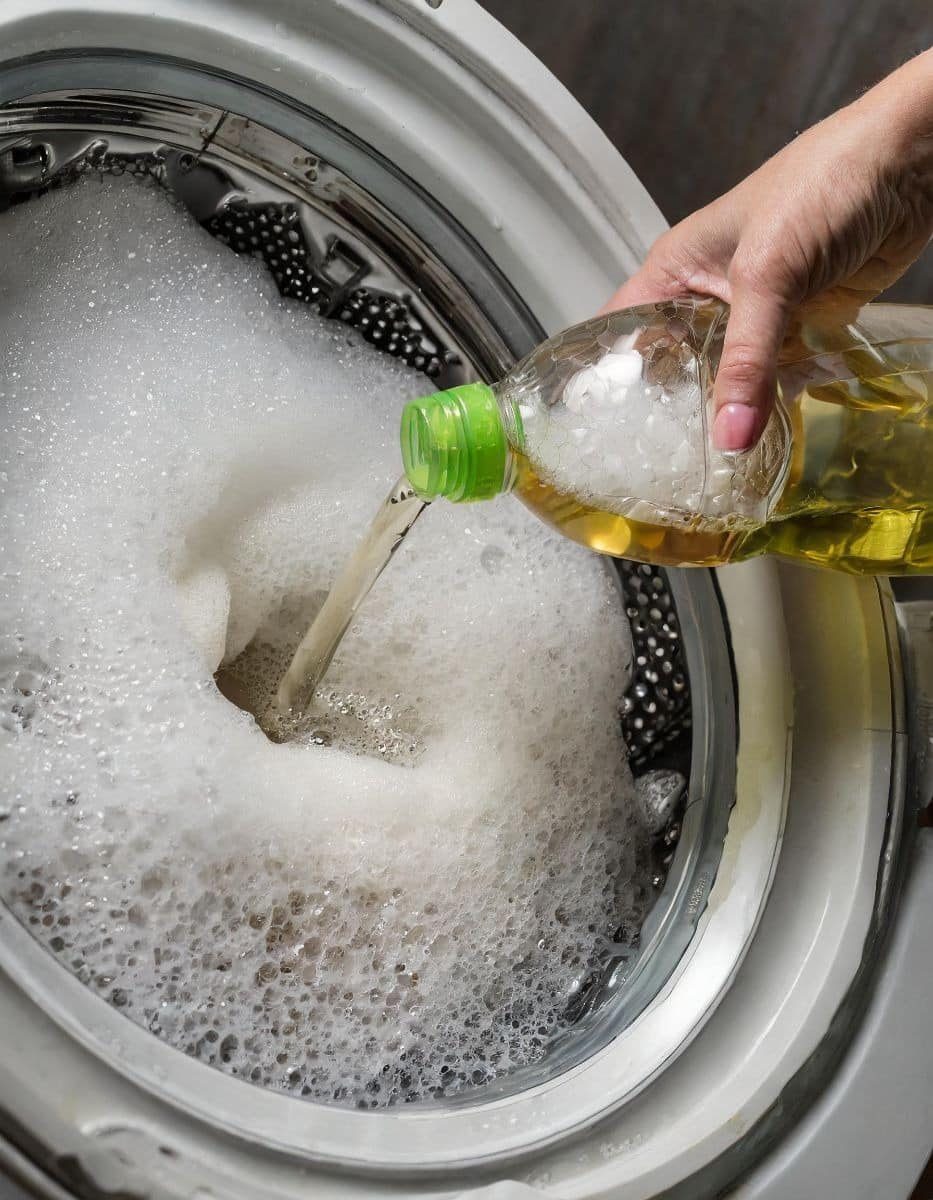ADVERTISEMENT
The Correct Way to Use Vinegar for Laundry
While vinegar is incredibly effective, using it incorrectly can result in less-than-optimal results. To reap all of vinegar’s laundry benefits, you’ll need to know when and how to use it. Here’s the step-by-step guide to using vinegar correctly in your laundry routine.
1. Add Vinegar During the Rinse Cycle
One of the most common mistakes people make when using vinegar in laundry is adding it during the wash cycle with the detergent. While vinegar can help break down detergent buildup, adding it alongside the detergent may diminish its effectiveness.
The right way to use vinegar is to add it during the rinse cycle. This allows the vinegar to act on the detergent residues and soften the fabrics without interfering with the initial cleaning process. Most washing machines have a fabric softener compartment, which is where you can add the vinegar. If yours doesn’t have this feature, simply add the vinegar directly into the drum when the rinse cycle begins.
2. Use the Right Amount
When it comes to vinegar, a little goes a long way. Typically, 1/2 cup to 1 cup of white distilled vinegar is all you need for a regular-sized load of laundry. You don’t need to go overboard, as too much vinegar can cause an overwhelming smell or leave your clothes too acidic.
If you have a large load or are dealing with tough stains, you can increase the amount slightly, but always use moderation. Adding vinegar in excess can sometimes be too harsh for delicate fabrics or cause a strong vinegar odor that lingers after washing.
3. Choose White Distilled Vinegar
To avoid any potential staining, always use white distilled vinegar for laundry. This type of vinegar is colorless and won’t leave any stains on your clothes or towels. While apple cider vinegar is also effective, it may have a stronger odor and could potentially cause discoloration in some fabrics. Stick with white vinegar for the best results.
4. Don’t Mix Vinegar with Bleach
While vinegar is a fantastic natural cleaner, it should never be mixed with bleach. Combining these two substances can create harmful fumes and lead to fabric damage. If you need to use bleach for a specific laundry load, make sure to wash the clothes separately from those you plan to treat with vinegar.
5. Soak Your Towels in Vinegar for Extra Softness
If your towels have become especially stiff or have accumulated fabric softener residue, a good vinegar soak can work wonders. Simply fill a basin with warm water and add 1-2 cups of white vinegar. Let the towels soak in the solution for about an hour before washing them as usual. This will help break down the buildup and restore the softness and fluffiness to your towels.
6. Pre-Treat Stains with Vinegar
Vinegar can also be a powerful tool for removing stains from clothing. For stubborn stains like sweat, wine, or food spills, apply a small amount of vinegar directly to the stain and let it sit for about 10-15 minutes before washing the item as usual. The acidity of the vinegar can help break down the stain, making it easier to wash away.
7. Regular Maintenance for Smelly Laundry
If your laundry tends to develop an unpleasant odor (like musty towels or gym clothes), add 1 cup of vinegar to the rinse cycle on a regular basis. This will help neutralize any lingering smells and prevent them from building up over time.
Why Vinegar Is Better Than Fabric Softener
Many people rely on commercial fabric softeners to soften their towels and clothes, but vinegar offers several advantages over traditional fabric softeners:
- No Chemical Residue: Fabric softeners often leave a waxy, chemical residue on your clothes, which can build up over time and make fabrics feel stiff. Vinegar, on the other hand, leaves no residue, helping to preserve the texture and quality of your clothes.
- Eco-Friendly: Vinegar is a natural and eco-friendly alternative to fabric softeners, which often contain artificial fragrances and chemicals that can harm the environment.
- Cost-Effective: Vinegar is much more affordable than commercial fabric softeners and can be used for a variety of household tasks beyond just laundry.
Conclusion
Vinegar is a simple, affordable, and highly effective way to keep your laundry looking fresh and feeling soft. By using it correctly—adding it during the rinse cycle, using the right amount, and choosing white distilled vinegar—you can boost the brightness of your whites, soften your towels, and eliminate lingering odors. With vinegar, you can skip the harsh chemicals and fabric softeners, all while enjoying cleaner, softer laundry.
So, the next time you’re doing laundry, make sure to give vinegar a try! It’s an easy and natural solution that can help keep your clothes looking and feeling their best.
ADVERTISEMENT
ADVERTISEMENT
